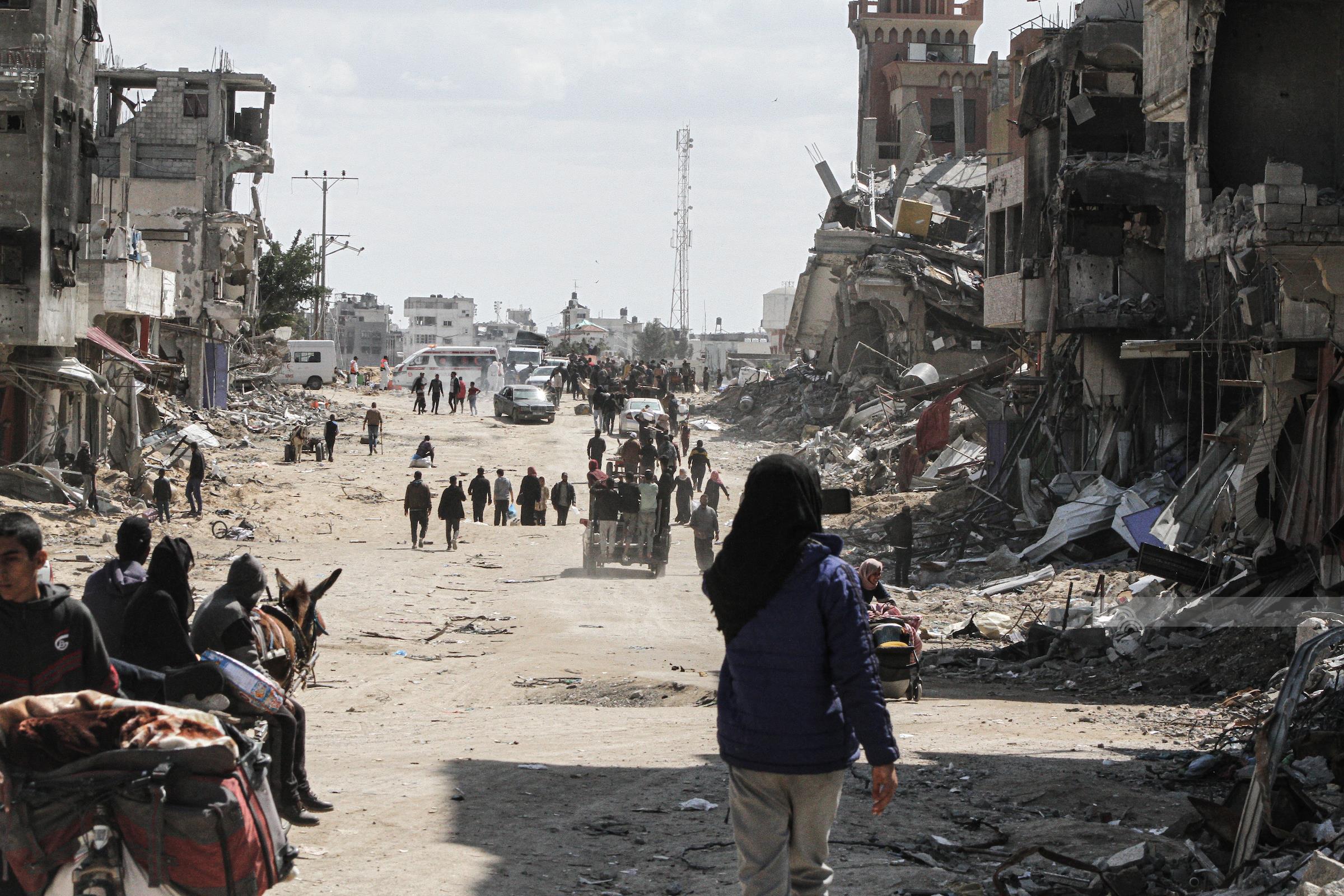GAZA, November 24, 2024 (WAFA) – Israeli occupation forces have continued their deadly onslaught in the northern Gaza Strip for the 51st consecutive day, intensifying airstrikes that have destroyed homes, infrastructure, and left entire neighborhoods in ruins.
The ongoing siege has severely restricted the flow of essential goods such as food, water, and medical supplies, exacerbating the already dire humanitarian crisis and forcing thousands of civilians to flee southward.
The latest reports from Gaza indicate that more than 2,000 people have been killed in the northern Gaza area alone, with hundreds more injured and detained since the beginning of the Israeli ground offensive in the region 51 days ago. Entire neighborhoods have been flattened, and more than half of the region's population, approximately 200,000 people, have been displaced as a result of the relentless bombardment and blockade.
In recent weeks, Israeli occupation forces have increasingly forced tens of thousands of residents from the North Gaza Governorate to move south, particularly to Gaza City, in what appears to be an effort to establish a "buffer zone" or separation area.
Those who remain in northern Gaza—around 80,000 people—are living in catastrophic conditions. These civilians face daily bombings, artillery fire, and drone strikes, with no escape from the violence or access to basic necessities.
Despite the ongoing displacement, many residents have refused to abandon their homes, choosing to endure the relentless destruction and deprivation. For those who have fled to safer buildings within the north, the situation is no better. Shelters are overcrowded, and families are left without adequate food, water, or medical care, as supply routes remain blocked by the siege.
The already dire conditions have worsened with the onset of winter, compounding the misery of the over two million displaced Palestinians across Gaza. Thousands of families are now living in makeshift tents or in unsafe buildings, exposed to the cold and without the means to survive the harsh conditions.
The Israeli blockade and destruction have crippled Gaza’s healthcare system, leaving hospitals overwhelmed and unable to provide care for the growing number of casualties. In addition to the human toll, the siege has caused a severe food and water shortage, leading to a famine-like situation in many parts of the Gaza Strip.
The UN and various international organizations have repeatedly urged Israel to allow humanitarian aid into Gaza, but these calls have so far been ignored. The UN has warned that without urgent access to essential supplies, Gaza could face a full-scale humanitarian catastrophe, with millions at risk of starvation and disease.
Despite these grave warnings, the Israeli government has maintained its blockade, further exacerbating the suffering of Gaza’s residents. International calls for a ceasefire and the facilitation of humanitarian aid have gone largely unanswered.
The ongoing Israeli genocide in Gaza since October 2023 has so far resulted in at least 44,176 documented Palestinian fatalities, with over 104,473 others injured.
Thousands of victims are feared trapped under rubble, inaccessible to emergency and civil defense teams due to Israeli attacks.
Israel's genocidal attack continues unabated despite calls from the UN Security Council for an immediate ceasefire and directives from the International Court of Justice urging measures to prevent genocide and alleviate the dire humanitarian situation in Gaza.
M.N









